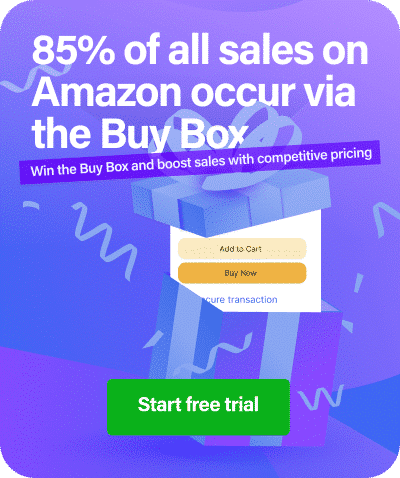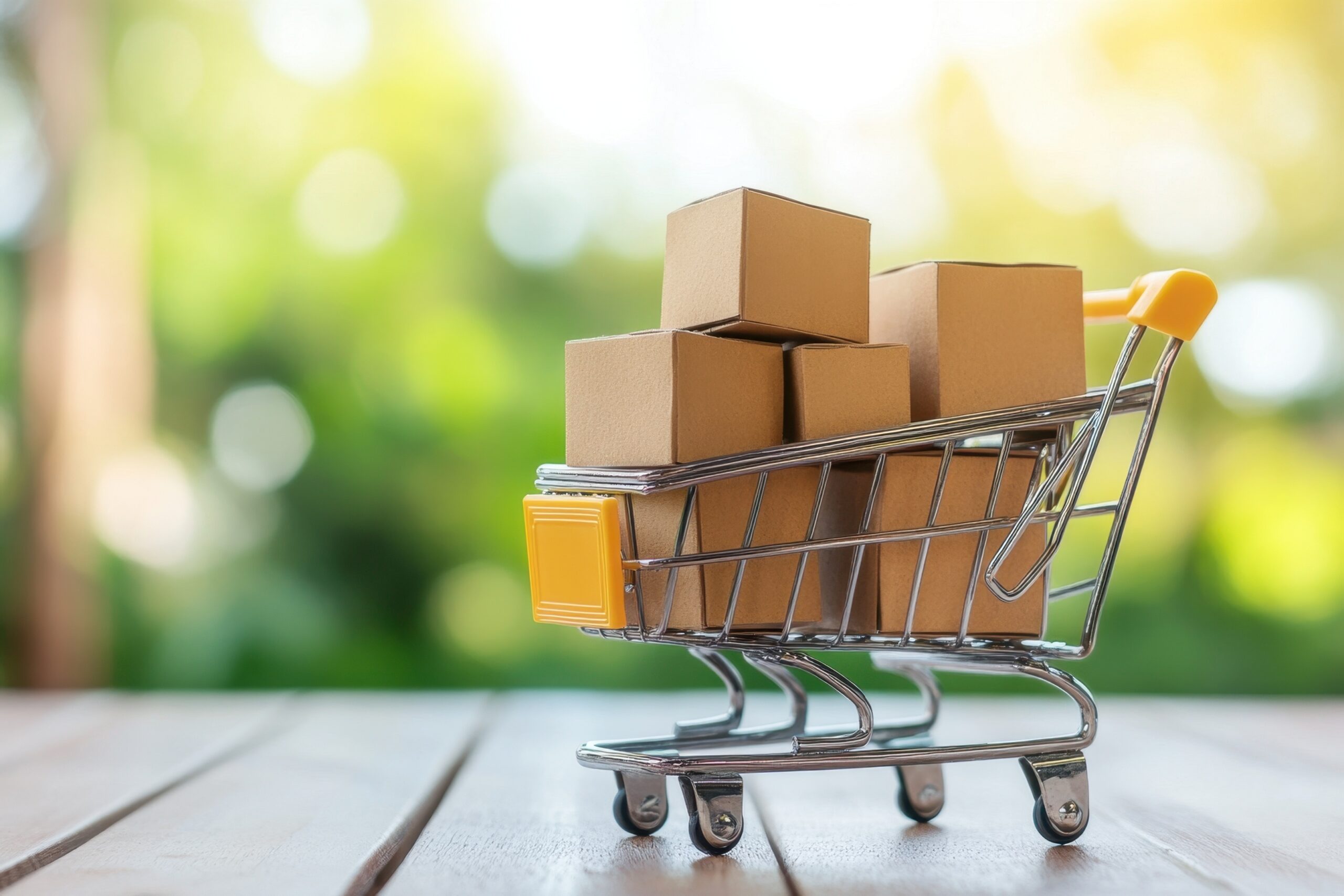The Buy Box drives over 80% of Amazon sales—and 7-figure sellers know exactly how to win it. This guide reveals insider tactics top earners use to dominate the Buy Box in 2025, including fulfillment strategies, pricing frameworks, inventory control, and performance metrics. Apply what the pros do to scale faster.
Why the Buy Box Still Reigns Supreme
If you’re serious about scaling on Amazon, there’s one metric that matters more than almost anything else: your Buy Box win rate. While newer sellers chase clicks and conversions, seasoned 7-figure sellers obsess over a single question: “Am I in the Buy Box right now?”
The reason is simple. When a customer lands on a product page and clicks “Add to Cart,” they’re buying from whoever holds the Buy Box at that exact moment. Even if five other sellers offer the same ASIN at competitive prices, the one in the Buy Box captures the sale. It’s winner-takes-all.
This guide is for serious Amazon sellers ready to level up, whether you’re running a private label brand, managing FBA wholesale inventory, or scaling an FBM operation. What makes these tactics “insider” isn’t theory or guesswork. These are proven strategies from sellers who’ve crossed seven figures and attribute much of their success to mastering Buy Box mechanics.
Quick Recap: How the Buy Box Actually Works
Before diving into advanced tactics, let’s establish the foundation. Amazon doesn’t award the Buy Box to the cheapest seller by default. Instead, it uses a rotation system that evaluates multiple factors in real-time. Understanding the Amazon Buy Box algorithm is crucial for developing winning strategies.
Key Buy Box Factors:
- Fulfillment method: FBA receives preferential treatment over FBM (though Seller-Fulfilled Prime can compete)
- Landed price: Total cost including item price, shipping, and applicable taxes
- Seller performance metrics: Order Defect Rate (ODR), Late Shipment Rate (LSR), cancellation rate, and customer feedback
- Availability: In-stock inventory ready to ship immediately
- Shipping speed: Faster delivery options increase eligibility
Amazon rotates Buy Box placement among eligible sellers, but higher-performing sellers with better metrics win more rotation time. On mobile devices—which now account for over 70% of Amazon traffic, Buy Box visibility becomes even more critical since customers rarely scroll to see other offers.
Understanding these mechanics is table stakes. The difference between good sellers and great ones lies in how aggressively they optimize each factor.
Strategy 1: Optimize Fulfillment for Prime Priority
Amazon makes no secret that Prime eligibility matters. FBA (Fulfillment by Amazon) remains the gold standard for Buy Box wins because it automatically qualifies your listings for Prime shipping, handles customer service, and ensures consistent delivery performance.
Why FBA Dominates Buy Box Allocation: The algorithm heavily favors FBA because Amazon controls the fulfillment experience. When you ship FBA, you’re essentially letting Amazon guarantee two-day (or faster) delivery, hassle-free returns, and reliable tracking. This reduces risk for Amazon and improves the customer experience—two factors the algorithm rewards. Learn more about the pros and cons of Amazon FBA to determine if it’s right for your business model.
But here’s what separates strategic sellers from everyone else: they don’t just use FBA blindly. Top earners analyze which SKUs benefit most from FBA and which might perform better through alternative methods.
The SFP Alternative for High-Margin FBM Sellers:
Seller-Fulfilled Prime (SFP) has become a viable path for established sellers who want to maintain control over inventory while still accessing Prime benefits. One 7-figure FBM seller shared: “We shifted our top 40 SKUs to SFP and our Buy Box win rate jumped to 78% within 60 days. The key was investing in regional warehousing and hitting 99%+ on-time delivery consistently.”
SFP requires meeting strict performance standards—including same-day or one-day shipping to major metros and maintaining near-perfect on-time rates—but it allows higher-margin sellers to avoid FBA fees while competing for the Buy Box. For FBM sellers looking to compete effectively, implementing the right repricing strategies for Amazon FBM sellers is essential.
Pro Tip: If you’re using FBM without SFP certification, focus on fast regional shipping and premium carriers. While you won’t match FBA’s Buy Box preference, you can still capture rotation time during high-demand periods when FBA sellers stock out.
Strategy 2: Deploy Repricing with Strategic Guardrails
Static pricing is one of the fastest ways to lose Buy Box share. The competitive landscape on Amazon shifts by the hour, and manually adjusting prices simply can’t keep pace. That’s why every 7-figure seller interviewed for this guide uses some form of automated repricing.
Why Automated Repricing Wins:
Amazon’s Buy Box algorithm doesn’t just look at your price once and lock it in. It continuously re-evaluates all eligible offers, adjusting Buy Box placement based on real-time pricing changes, inventory levels, and competitor movements. A seller who had the Buy Box at 10 AM might lose it by noon if a competitor drops their price by 50 cents.
Top sellers use repricing tools like Repricer.com to stay competitive without racing to the bottom. The smartest repricing strategies combine velocity-based logic with profit guardrails. Understanding how repricing helps you win the Amazon Buy Box can transform your sales performance.
Real-World Case Study:
A wholesale electronics seller implemented velocity-based repricing through Repricer.com and saw a 112% increase in Buy Box ownership within 90 days. Their strategy: set a minimum profit margin of 18%, then allow the repricing algorithm to adjust prices every 15 minutes based on competitor activity and sales velocity.
“We were leaving money on the table with static pricing,” the seller explained. “Some items could sell at a 25% margin, but we were stuck at 22% because we weren’t reacting fast enough. The repricing tool finds the sweet spot where we maximize both price and Buy Box time.”
Guardrails That Protect Your Business:
Smart repricers don’t just chase the lowest price. They use rules to protect profitability:
- Set minimum profit margins or floor prices that won’t be undercut
- Avoid repricing wars with known feedback manipulators or counterfeiters
- Implement time-based rules (e.g., higher prices during peak hours, competitive pricing overnight)
- Create SKU-specific strategies for high-velocity vs. high-margin items
Advanced sellers also layer in competitive intelligence, identifying which competitors are worth matching and which are likely running unsustainable pricing models. For those serious about optimization, exploring advanced repricing strategies can unlock significant growth.
Strategy 3: Maintain Near-Perfect Seller Metrics
Amazon’s algorithm treats seller performance metrics as trust signals. If your Order Defect Rate (ODR) creeps above 1%, your Late Shipment Rate (LSR) exceeds 4%, or your cancellation rate spikes, your Buy Box eligibility suffers immediately, even if your pricing is competitive.
The Metrics That Matter Most:
Seven-figure sellers monitor their dashboards obsessively. Here are the thresholds they never let slip:
- Order Defect Rate (ODR): Below 0.5% (target: under 0.3%)
- Late Shipment Rate (LSR): Below 2.5% (target: under 1%)
- Pre-Fulfillment Cancel Rate: Below 2% (target: under 0.5%)
- Valid Tracking Rate: Above 95% (target: 99%+)
- Seller Feedback Rating: Maintain 95%+ positive over trailing 12 months
Dashboard Monitoring Routines:
Top sellers don’t wait for problems to appear. They build routines around metric monitoring:
- Daily checks of ODR and LSR via Seller Central dashboard
- Automated alerts through third-party tools that notify them instantly when metrics dip
- Weekly deep-dives into negative feedback and A-to-Z claims to identify patterns and fix root causes
One private label seller shared: “We set up Slack alerts for any metric that moves outside our target range. If ODR hits 0.4%, our operations team gets pinged immediately. We’ve caught and fixed issues before they ever impacted our Buy Box share.”
Proactive Metric Management:
Preventing metric issues is easier than fixing them. Successful sellers focus on:
- Quality control at the source: Inspect products before shipping to catch defects early
- Clear communication: Set realistic delivery expectations in listings to reduce negative feedback
- Rapid response: Address customer complaints within hours, not days, to prevent escalations to A-to-Z claims
When metrics inevitably dip, these sellers know how to course-correct fast. They prioritize resolving customer issues, request feedback removal when appropriate, and temporarily slow down operations to ensure quality until metrics recover. For additional insights, check out this guide on improving Amazon feedback to win the Buy Box.
Strategy 4: Never Let Your Top ASINs Go Out of Stock
Lost Buy Box time due to stockouts equals lost revenue—and for high-velocity items, even a few hours out of stock can mean thousands in missed sales. Seven-figure sellers treat inventory management as seriously as pricing strategy.
The Real Cost of Stockouts:
When you run out of inventory, you don’t just lose the Buy Box temporarily. You lose sales velocity, which impacts your organic ranking. You might also lose Buy Box eligibility for days after restocking if competitors establish stronger positioning during your absence.
A wholesale apparel seller explained: “We calculated that a single 24-hour stockout on our bestselling ASIN cost us approximately $4,800 in lost sales, plus we spent two weeks fighting to regain our previous Buy Box win rate. Now we treat inventory like oxygen—it’s non-negotiable.”
Inventory Planning Systems That Work:
Top sellers use inventory management tools available through integrations with platforms like Amazon Seller Central to automate restock triggers based on sales velocity, lead times, and safety stock levels. They build cushion into their calculations specifically to maintain Buy Box presence.
Key Tactics:
- Calculate safety stock based on maximum daily sales velocity, not average
- Set restock alerts at least 2-3 weeks before stockout risk (accounting for supplier lead time)
- For top-performing ASINs, maintain 60-90 days of inventory rather than the standard 30-45 days
- Use FBA shipment splitting strategically to ensure inventory reaches multiple fulfillment centers for faster delivery coverage
Seller Hack for 24/7 Buy Box Coverage:
One seller revealed: “We added buffer stock to win the Buy Box around the clock on our top 20 ASINs. We keep 25% more inventory than our restock calculator recommends for these SKUs specifically. Yes, it ties up more capital, but the ROI from holding the Buy Box during peak hours more than pays for the carrying cost.”
For seasonal products or items with unpredictable demand spikes, advanced sellers use Amazon’s FBA inventory forecasting tools combined with third-party demand planning software to stay ahead of stockouts before they happen.
Strategy 5: Use Tactical Discounting and Promotions Strategically
Price isn’t just about your base listing price. Smart sellers leverage Amazon’s promotional tools to trigger short-term Buy Box wins during critical selling windows—without permanently devaluing their products.
Promotional Tools That Boost Buy Box Performance:
Amazon offers several promotion types, and 7-figure sellers know exactly when and how to deploy each:
- Lightning Deals: Drive massive visibility spikes during Prime Day, Black Friday, or other peak shopping events
- Coupons: Add a visual discount badge that attracts attention without permanently lowering your price
- 7-Day Deals: Create urgency for mid-tier promotions that run longer than Lightning Deals
- Subscribe & Save discounts: Lock in recurring revenue while improving Buy Box positioning
Combining Price Drops with Peak Season Targeting:
One private label beauty brand shared their Q4 strategy: “We run 15% off coupons on our core SKUs from November 15 through Cyber Monday. This drops our effective price just enough to dominate the Buy Box during our highest-traffic period. We make up the margin discount with 3X the sales volume.”
The key is strategic timing. Rather than running perpetual promotions that train customers to wait for sales, top sellers use time-limited offers during periods when customer intent and traffic are naturally highest. Learn how to maximize these opportunities with a comprehensive Prime Big Deal Days repricing strategy.
Insider Tactic: Pre-Promo Repricing Buffer:
Here’s a tactic most sellers miss: Before launching a major promotion, experienced sellers adjust their base price upward by 5-10%, then apply the promotional discount. This maintains margin protection while still delivering perceived value to customers.
For example, if your target sale price is $29.99 and you’re running a 20% coupon, you could temporarily increase your base price to $37.49, then apply the coupon to reach your target effective price. Customers see the larger discount percentage, and you protect your margins from repricing algorithms that might have pushed you lower during the promotion.
Strategy 6: Isolate Listings to Maintain Brand Control
For private label sellers, Buy Box hijackers represent one of the most frustrating challenges. Unauthorized sellers listing against your ASIN can dilute your brand, undercut your pricing, and steal Buy Box share—even though you own the product.
Preventing Hijackers Before They Appear:
Top private label brands use a multi-layered defense strategy:
- Amazon Brand Registry: Enroll immediately to gain access to enhanced content tools and proactive brand protection
- Transparency Program: Apply unique codes to products that Amazon scans at fulfillment centers to verify authenticity
- IP Accelerator: Fast-track trademark registration to qualify for Brand Registry protections sooner
One private label supplement seller explained: “Before Brand Registry, we were constantly fighting hijackers. We’d win the Buy Box for a few days, then some unauthorized reseller would appear at a lower price and steal 40% of our sales. After implementing Transparency and actively enforcing our IP, hijacking attempts dropped 90%.”
For sellers dealing with active threats, this Amazon listing hijacker emergency action plan provides step-by-step guidance for rapid response.
MAP Enforcement for Authorized Resellers:
If you work with wholesale partners or authorized distributors, Minimum Advertised Price (MAP) policies become critical. Without MAP enforcement, authorized sellers might undercut each other, creating a race to the bottom that hurts everyone.
A 7-figure electronics brand shared: “MAP monitoring added 9% to our Buy Box hold rate. We use software to track every seller listing our products and send automated warnings when anyone violates MAP. Most comply immediately, and the few who don’t lose their authorization. It keeps pricing stable across all our sales channels.”
Active Monitoring and Rapid Response:
Brand protection isn’t set-and-forget. Successful sellers check their listings weekly for unauthorized sellers, test-buy products from suspicious accounts to verify authenticity, and submit cease-and-desist notices or Amazon intellectual property complaints when violations occur.
The goal isn’t just to win the Buy Box today—it’s to maintain exclusive or tightly controlled access to your ASIN so you’re competing only with authorized, MAP-compliant sellers.
Strategy 7: Split Test Pricing Across SKUs and Timeframes
Advanced sellers don’t guess about pricing—they test systematically. By running controlled experiments on different SKUs, regions, or times of day, they identify pricing strategies that maximize both revenue and Buy Box time.
A/B Testing Pricing Variables:
One wholesale home goods seller tested a simple hypothesis: Would dropping the price by $1 on a high-velocity item increase Buy Box ownership enough to offset the margin reduction?
The result: A $1 price reduction increased Buy Box time by 6%, which translated to 220 additional monthly units sold. The reduced margin per unit was more than offset by increased volume, resulting in 11% higher monthly profit on that ASIN.
Testing Frameworks That Work:
Top sellers structure their pricing tests around specific variables:
- Price elasticity: Test $0.50 to $2 increments on similar SKUs to find optimal price points
- Time-of-day pricing: Experiment with higher prices during peak shopping hours (6-10 PM) and competitive pricing overnight
- Regional pricing: For FBA inventory distributed across fulfillment centers, test whether regional pricing variations impact Buy Box wins in specific markets
Tools for Data-Driven Decisions:
Sellers combine data from multiple sources:
- Seller Central’s Business Reports for sales velocity and conversion rate analysis
- Repricer.com dashboards showing Buy Box win rate correlated with price changes
- Third-party analytics tools for competitor pricing intelligence
One seller emphasized: “We treat pricing like a science experiment. Every price change gets documented, we track the impact for at least 14 days, and we only make one variable change at a time. Over six months, these small optimizations added up to a 23% increase in overall profitability.”
The key is systematic testing with clear success metrics. Avoid making multiple changes simultaneously, which makes it impossible to isolate what’s working. To dive deeper into data-driven pricing, explore Amazon competitor price analysis strategies.
Summary Table: Tactics & Results from 7-Figure Sellers
| Tactic | Tool/Method | Reported Impact |
| FBA/SFP Fulfillment | FBA or Seller-Fulfilled Prime | +78% Buy Box win rate |
| Automated Repricing Logic | Repricer.com, velocity-based algorithms | +112% Buy Box ownership |
| Inventory Automation | Safety stock buffers, restock triggers | +24% uptime on critical ASINs |
| Promotional Pricing Strategy | Amazon Coupons, Lightning Deals | +19% visibility boost during peak periods |
| Metric Monitoring & Alerts | Dashboard tracking, automated alerts | -38% ODR over 60 days |
| Brand Protection & MAP | Brand Registry, Transparency Program | +9% Buy Box hold rate |
| Split Testing Prices | Seller Central data + repricer analytics | +6% Buy Box time on high-velocity items |
Your Next Steps: From Tactics to Implementation
Winning the Buy Box consistently requires mastering the intersection of pricing, fulfillment, and operational excellence. The sellers who scale past seven figures don’t rely on a single tactic—they systematically optimize every factor Amazon’s algorithm evaluates.
Start by auditing your current Buy Box performance. Check your win rate in Seller Central’s Business Reports, identify your top 20 revenue-driving ASINs, and prioritize improvements that will have the biggest impact. For new sellers just starting their Buy Box journey, this 90-day winning guide for new sellers provides a structured roadmap.
Action Plan:
- Implement automated repricing with profit guardrails on your highest-volume SKUs
- Set up daily metric monitoring with automated alerts for ODR and LSR
- Calculate safety stock levels for your top ASINs and add buffer inventory
- Test promotional pricing during your next high-traffic period
- Review Brand Registry enrollment if you’re selling private label products
The Buy Box isn’t a mystery—it’s a system you can master with the right strategies and consistent execution. Avoid these common Amazon Buy Box mistakes to accelerate your path to consistent wins.
FAQs
How often does the Buy Box update?
The Buy Box updates continuously in real-time. Amazon’s algorithm re-evaluates eligible sellers every few seconds based on price changes, inventory availability, and seller performance. This is why automated repricing is so critical—manual price adjustments simply can’t keep pace with algorithmic evaluation frequency.
What’s the best Buy Box win rate to aim for?
For highly competitive ASINs with multiple sellers, achieving 50-70% Buy Box time is excellent. Top performers often reach 75-85% through aggressive repricing and fulfillment optimization. For private label or exclusive products, you should target 95%+ (allowing for brief gaps during restocking or price updates). Any consistent win rate below 40% on a profitable ASIN signals significant room for improvement.
Do 7-figure sellers use repricing software?
Yes, virtually every 7-figure seller uses some form of automated repricing. The competitive pace on Amazon makes manual pricing adjustments impractical for scaling operations. Successful sellers choose repricers that offer strategic controls—minimum margins, SKU-specific rules, and competitive intelligence—rather than simple “race to the bottom” algorithms. Tools like Repricer.com allow sellers to stay competitive while protecting profitability.
What’s more important for the Buy Box: price or seller metrics?
Both matter significantly, but seller metrics act as a multiplier on pricing effectiveness. If your ODR exceeds 1% or your LSR is above 4%, even the lowest price won’t consistently win the Buy Box because Amazon restricts your eligibility. Conversely, with near-perfect metrics, you can win substantial Buy Box time even at slightly higher prices than competitors. The winning strategy combines excellent metrics with competitive pricing through dynamic repricing.
Can you win the Amazon Buy Box without lowering your price?
Yes, it’s possible to win the Amazon Buy Box without lowering your price by optimizing other factors like fulfillment method, seller performance metrics, shipping speed, and customer service. If competitors have higher ODR or LSR, slower shipping, or poor feedback ratings, you can maintain the Buy Box at a higher price point through operational excellence.
What happens if my Buy Box gets suppressed?
A suppressed Buy Box occurs when Amazon determines your listing price is significantly higher than recent prices for the same item. This causes the Buy Box to disappear entirely, forcing customers to click “See All Buying Options” to purchase. To resolve this, you’ll need to adjust your pricing to be more competitive with historical data and current market rates, or wait for competitor prices to rise naturally.
How does Amazon Dynamic Pricing affect the Buy Box?
Amazon dynamic pricing allows you to automatically adjust prices based on real-time market conditions, competitor movements, and sales velocity. This adaptive approach significantly increases Buy Box win rates because your prices stay competitive throughout the day as market conditions shift. Static pricing can’t compete with sellers using dynamic repricing algorithms that respond within minutes to market changes.
Ready to Master the Buy Box?
The strategies in this guide represent years of collective experience from top Amazon sellers who’ve built 7-figure businesses by mastering Buy Box fundamentals. But reading about tactics is just the first step—implementation is where real results happen.
Start with the area that will deliver the biggest immediate impact for your business. For most sellers, that means implementing automated repricing with intelligent guardrails. Repricer.com offers the fastest repricing engine on Amazon, with rule-based logic that protects your margins while maximizing Buy Box time.
Take action today:
- Start your free trial with Repricer.com to implement velocity-based repricing on your top ASINs
- Download our complete Buy Box eBook for even more advanced strategies
- Explore our repricing strategies guide to customize your approach by business model
The Buy Box is the single highest-leverage growth factor on Amazon. Master it, and you’ll unlock exponential sales growth while protecting your profitability.





